Have you ever tried to compare yourself to those body fat percentage pictures online to estimate your own body fat?
If you’re anything like me I’m sure you have!
Try using this calculator along with the body fat percentage pictures for a better estimate of your own percentage.
Most people tend to overestimate how supposedly low their body fat levels really are.
However, most people don’t even know what 8%, for example, in males, really looks like.
Knowing your percentage is another good way for measuring fat loss progress other than the use of a scale.
AGE
GENDER
WEIGHT
Waist Girth
(measured at the umbilicus)Wrist Circumference
(measured at the widest point)Waist Circumference
(measured at your umbilicus)Hip Circumference
(measured at the widest point)Forearm Circumference
(measured at the widest point)Body Fat
41.52%
The first time I got my body fat testing done, I could have sworn I was lower.
Here’s how I looked:

I figured that if I’m four weeks out from a competition, I had to be at least lower than 8%. Wouldn’t you have guessed that?
Well, actually, I was 8% on the dot.
It wasn’t too bad but not where I wanted to be that close to a show.
Here’s my actual results from doing a body fat percentage test with a Dexascan – the platinum standard for calculating percentages.
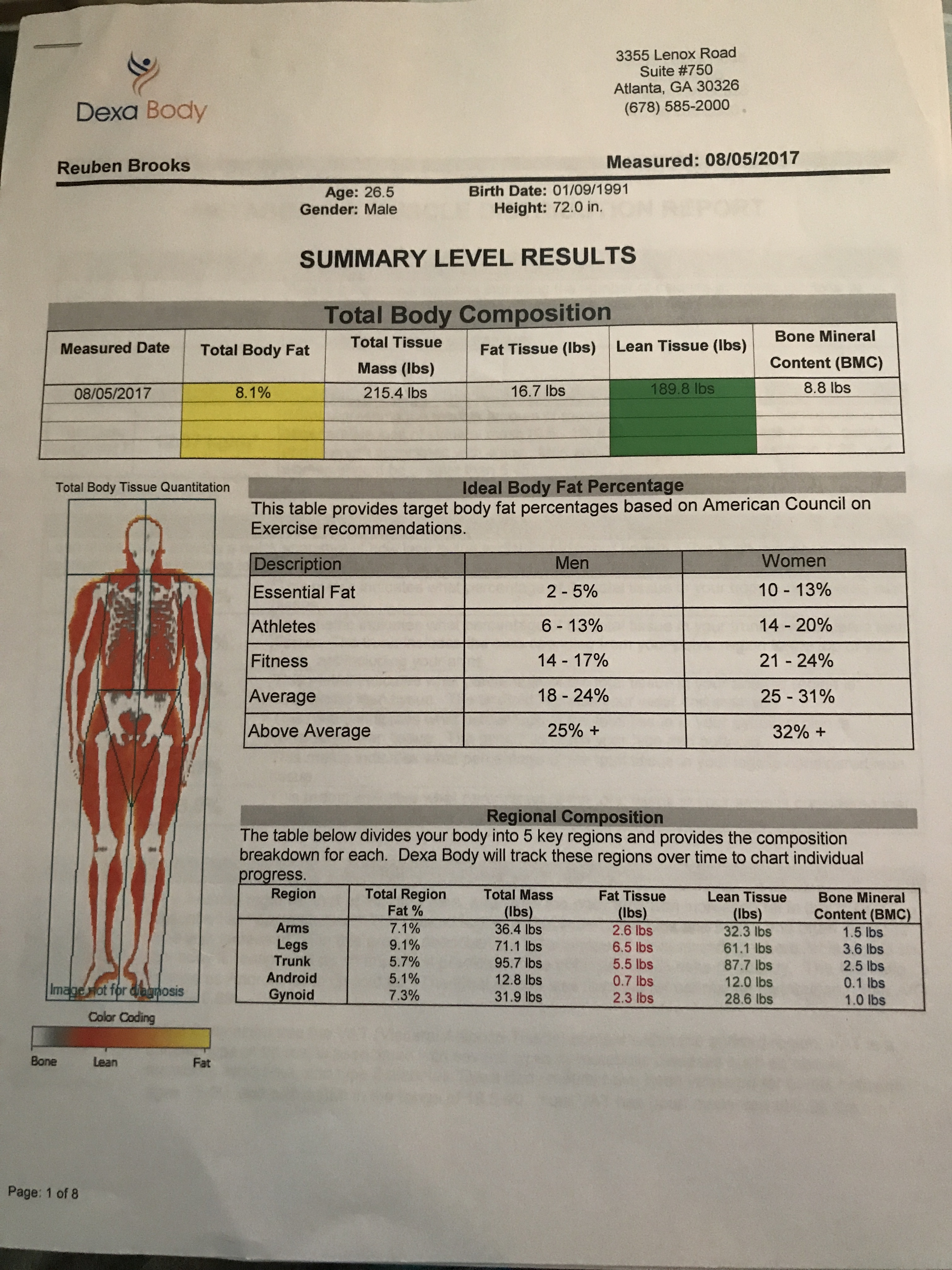
According to the results, I had 10 pounds more to lose before I stepped on stage. The last 6 pounds would be the essential fat that my body would need to survive. More on this later.
To put that into perspective, here’s what just one pound of fat looks like in terms of volume:
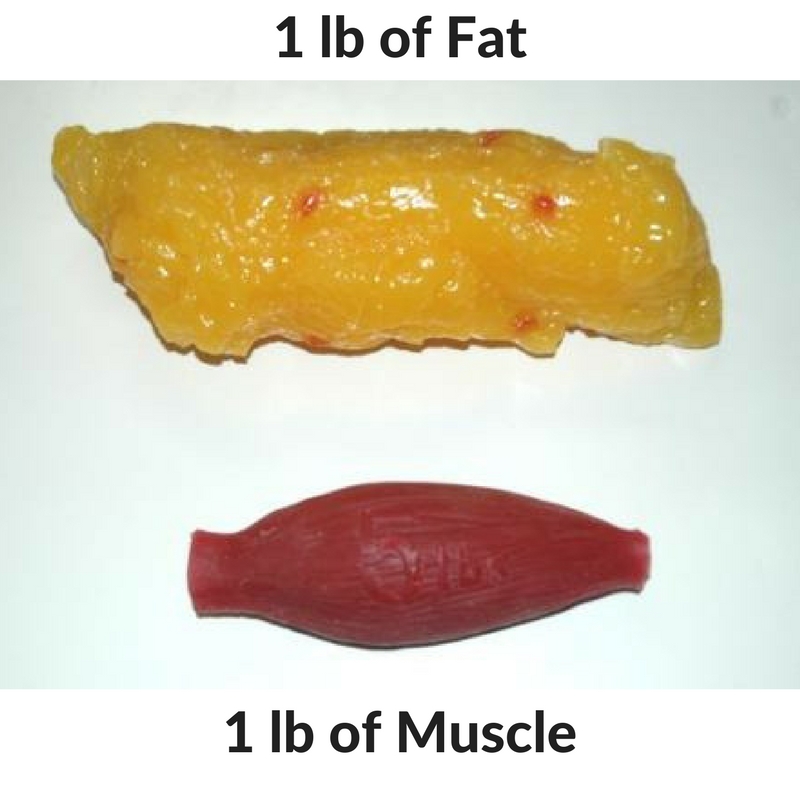
And considering the amount of effort that it took to get this lean, I was thinking that between 5-6% would be damn near impossible.
This led me to doing more research on the topic.
And in this article, I want to share a few things about what I learned, including…
- What is body fat percentage?
- How tracking body fat percentage is useful with flexible dieting
- Why body fat percentage is better than BMI (body mass index)
- Why body fat percentage pictures are great to estimate your own body fat
- Different ways to measure body fat
- How I Measure and Track My Body Fat Percentage
What is Body Fat Percentage?
The body fat percent is the total mass of fat divided by total body mass. This is the portion of your body weight that is comprised solely of fat tissue.
Example: A 135-pound female who has a body fat percentage of 21% would have about 28.4 pounds of fat tissue. The remaining 106.6 pounds of her body weight would be made up of her muscle, bone, nerves, skin, and other tissues.
According to the American Council on Exercise, this is how they classify body fat percentage for men and women:
| CLASSIFICATION | MEN | WOMEN |
| Essential Body Fat | 2 – 4% | 9 – 11% |
| Athlete | 6 – 13% | 14 – 20% |
| Fit | 14 – 17% | 21 – 24% |
| Normal | 18 – 25% | 25 – 31% |
| Overweight/Obese | 26%+ | 32%+ |
How Tracking Body Fat Percentage is Useful With Flexible Dieting
For the most part, many Flexible Dieters have the goal to decrease body fat percentage and increase their muscle mass.
Tracking your body fat percentage is just another great way of tracking progress.
Individuals with a higher than average body fat percentage or those with extremely low body fat percentage will have skewed results when using the standard TDEE formula.
Please note that individuals that meet these requirements need special calculations.
Knowing your body fat percentage allows you to give you a better idea how many pounds of fat your body has.
From there, you can determine a healthy goal weight and get a better idea of what your end goal will look like by comparing your percentage with the body fat percentage pictures.
Why Body Fat Percentage Is Better than BMI
If you workout, BMI is not for you.
BMI stands for body mass index, and it has only two factors to determine the results; height and weight.
That being said, If I’m 200 pounds at 6 foot, I would get a result of being overweight even if I was 8% body fat.
This is where body fat percentage comes into play. Body fat percent is measuring fat mass and lean body tissue.
This gives a more accurate representation of someone who is physically fit and is active.
Many doctors often use BMI as a simple and easy strategy to determine if a person is overweight, underweight, and or healthy or not.
Why Body Fat Percentage Pictures Are A Great Way to Estimate Your Own Body Fat
As mentioned at the beginning of the blog, most people tend to overestimate how low their body fat really is.
And to remove all doubt, I’ve uploaded a chart so that you can compare what percent the calculator gave you with the actual body fat percentage pictures.
This chart is not 100% accurate, but it gives a really great visual as to what one would look like at each percent.
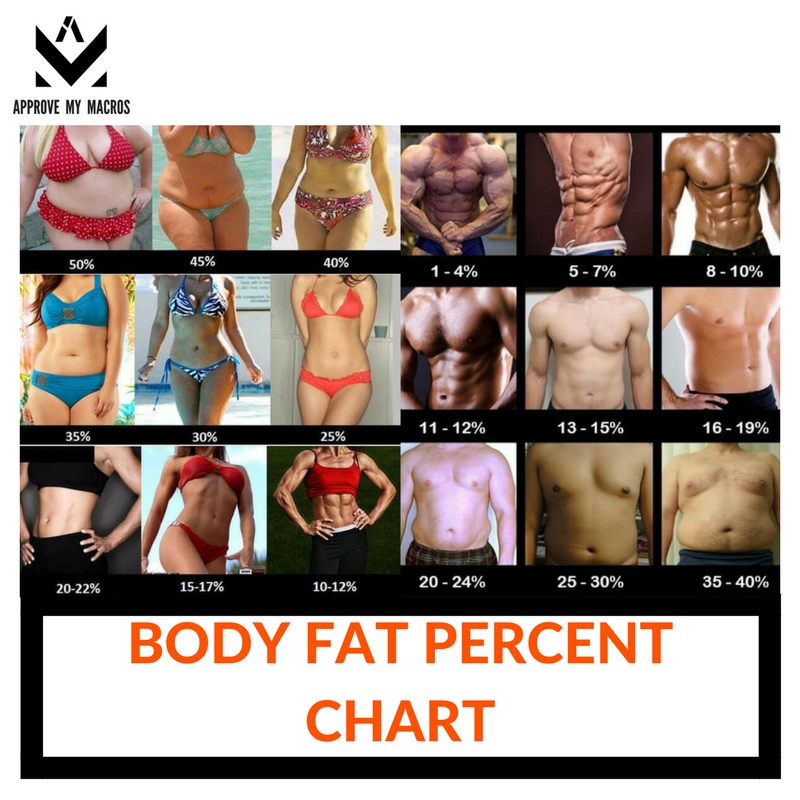
Different Ways To Measure Body Fat
In preparation for my competition, I did my measurements with a dexascan which is the platinum standard for body composition testing.
However, the dexascan isn’t usually that accessible unless you know somebody who works in an exercise physiology lab or if you live in the area around a dexabody.com truck.
There are many ways to measure body fat percentage, and here are the top 5 including the advantages and disadvantages of each.
1. BIOELECTRICAL IMPEDANCE ANALYSIS
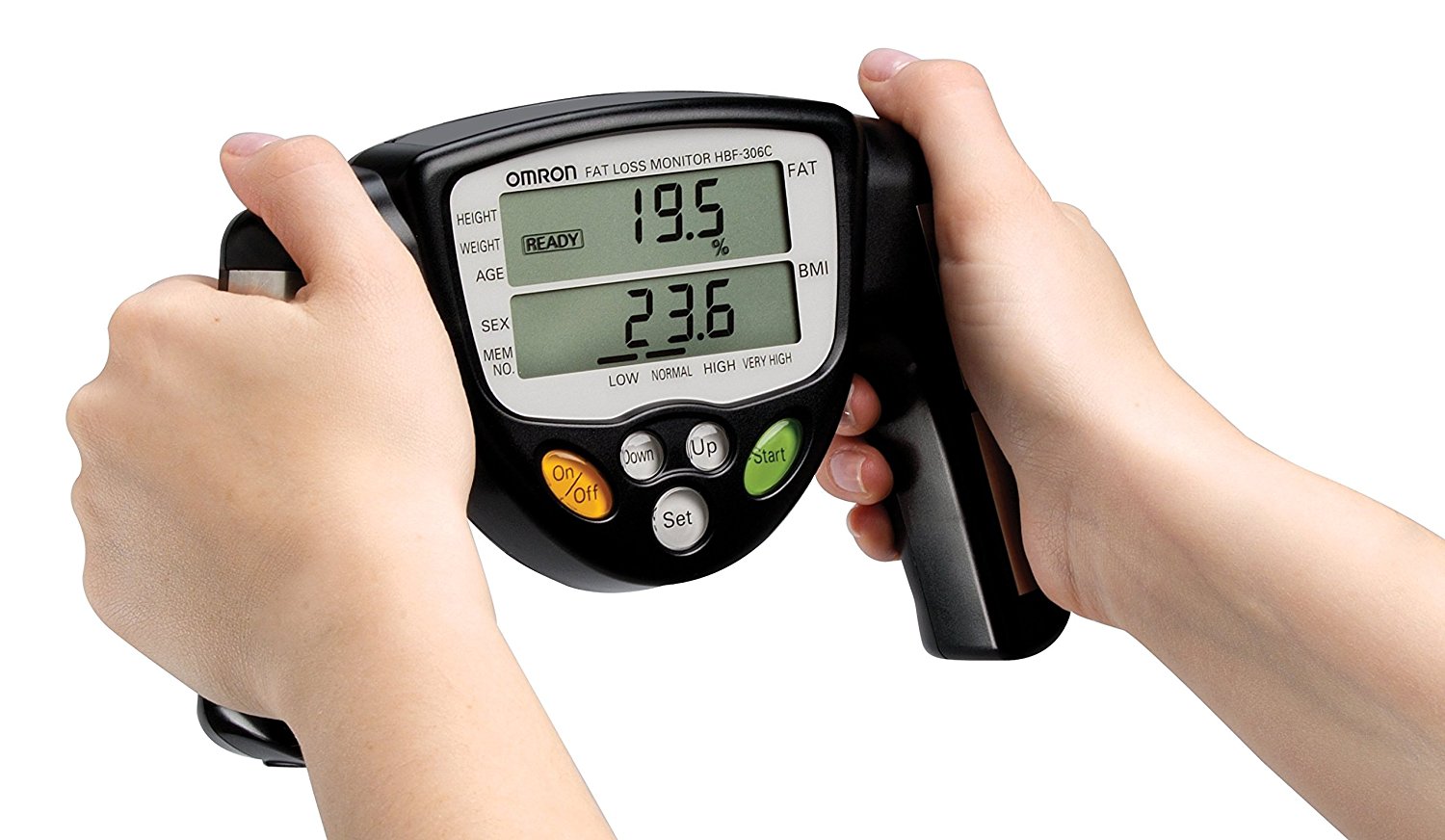
Bioelectrical Impedance Analysis (BIA) is a device that sends low-level, safe, electrical current through the body. Just about every gym has one of these machines. It’s quick, easy, and painless to use.
Through this method, body composition and body fat percentage are measured.
Pros: The BIA can be found easily, and you don’t need a certified operator to give you your results.
Cons: Readings can be affected by hydration levels, food intake, skin temperature, and other factors like weight. This type of analysis is straightforward to use. However, the results on this machine can vary + or – 15.
2. SKIN CALIPERS
This method is done by measuring the amount of body fat covering muscles under the skin in several locations on the body by lightly squeezing an area of folded skin with the calipers.
You would need a fitness professional to calculate the total percentage based on the data gathered.
Pros: Skin caliper measurements are the cheapest and least complicated form of testing fats percentage. It is a top choice for regular, practical and affordable testing.
Cons: It’s possible the margin for error is higher when you’re testing yourself with calipers instead of using other higher forms of fat percentage testing devices.
Depending on who does your test, the results also may be off + or – 10
3. BOD POD
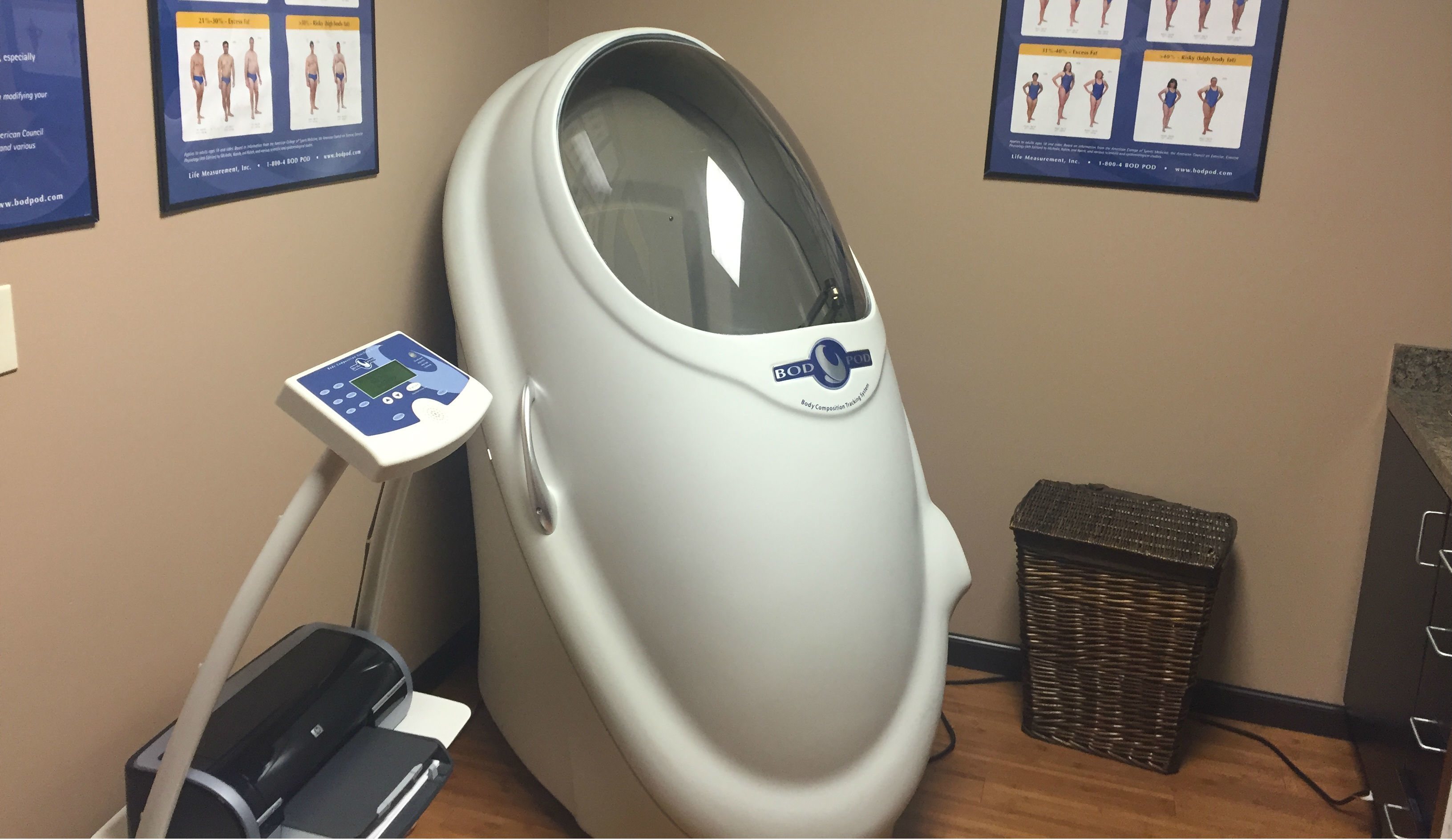
In this method, the machine will measure the air displace, which is plugged into a formula to determine body fat percentage. You’ll have to wear a skin-tight clothing and be in the bod pod for 5-8 minutes.
Pros: A perfect method for children and the elderly, and disabled individuals may have trouble being still. Easy and very quick test process. Depending on calibration, this method can be at + or – 7.
Cons: Not many facilities use the Bod Pod, so it can be difficult to locate one. It also requires skin-tight clothing such as spandex shorts, swim cap, and swimwear
4. HYDROSTATIC WEIGHING
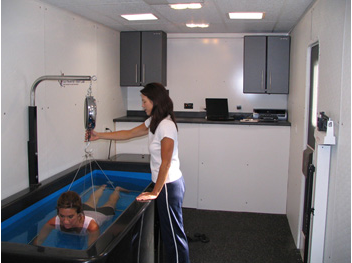
Hydrostatic weighing is a method used where the person is submerged in water and weighed. This weight is compared to their normal weight and calculated with considerations of the density of water.
Pros: Believed to be most accurate. It is considered “gold standard” for measuring body fat percentage. This method can be at + or – 5.
Cons: It is very inconvenient as it needs a lab, hospital, or specialty center, so unless you are in absolute need of a very accurate reading, this method might not be worth the time. It is also very costly.
5. DEXASCAN

DEXASCAN or Dual-Energy X-Ray Absorptiometry involves the use of X-Ray technology. It measures the absorption of high and low energy ray beams.
Pros: A very quick procedure. DEXA scanning is superior in accuracy to skin calipers, bioelectrical impedance, bod pod, and hydrostatic weighing.
Cons: Same with hydrostatic weighing, DEXA scanning requires special equipment and facility. Thus, scheduling an appointment is essential.
Given how confusing measuring your body fat can be, I hope using this calculator along with these body fat percentage pictures was helpful.
How I Measure And Track My Body Fat Percentage
I weigh myself daily
Because the Dexascan is so expensive to use on a monthly basis, I typically track my body fat percentage with calipers, a scale, a measuring tape, and by taking daily selfies.
Yes, this is the one time where you can take daily selfies and it would be considered appropriate J.
I typically weigh myself on a daily basis and then get an average of my total weight every 7 to 10 days.
Your weight is a variable that can have the ability to fluctuate daily depending on what you ate the night before, the amount of rest you had, if you’re holding water or even your bowel movements.
That being said being able to get an average weight gives you a better idea of your true weight.
I take biweekly caliper measurements
Although the calipers have a high margin for error, they’re still a good tool to use to track over a period of time.
What’s more important than the accuracy of a body fat percentage test is to be aware of the body fat percent number increasing or decreasing over time.
I take daily selfies
Ok, ok I’ll admit it. I take daily selfies, but it is for good reasoning.
This allows me to look at myself every day and gradually see improvements.
Comparing these pictures bi-weekly lets me see the progress I’ve made and helps keep me motivated.
I measure my waist
Measuring the size of your waist or getting a feel of your clothes getting a bit tighter or looser is a good way of measuring fat loss or fat gain.
It’s simple if your waist is increasing in inches; this indicates fat gain, and if it decreases, this indicates fat loss.
Remember, there is a difference between losing weight and losing body fat, so keep that in mind.
The Approved Way
No matter which way you track your body fat measurements, whether it’s comparing yourself with body fat percentage pictures or getting a DEXA scan.
The bottom line is that paying attention to your health is the most important part.
The best way to get rid of body fat and to keep your muscle is by a combination of personalized macros with a detailed weight training program.
What’s your thoughts on this? I’d love to hear your thoughts in the comments below.
You’ll Love Our Programs
Step-by-step ebooks or fully customized personal coaching. Let us help you succeed!
Scientific Reference:
https://www.ncbi.nlm.nih.gov/pubmed/15809537
https://www.healthost.com/blog/view/413453/pros-cons-of-the-5-most-popular-body-fat-testing-methods










Leave A Comment